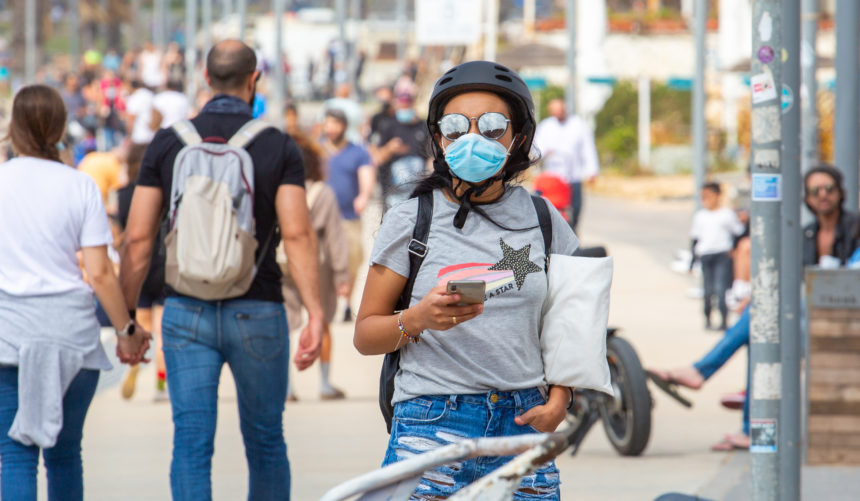Face-touching behaviour as a possible correlate of mask-wearing

The study Face-touching behaviour as a possible correlate of mask-wearing: A video observational study of public place incidents during the COVID-19 pandemic published in Transboundary and Emerging Diseases offers an analysis of the association between mask-wearing and face-touching in a Western European context, which was tested in two studies.
Study 1: sample of both masked and unmasked persons
The data comprised video footage of the real-life public behaviour in Amsterdam captured by security cameras between May and June 2020. The data were coded in accordance with a behavioural codebook, describing recurrent behaviour as observed in the natural and public environment. The researchers planned to sample both masked and unmasked persons. Mask-wearing included individuals wearing respirators, surgical masks or fabric masks. Face shields, eye protection, improvised masks and masks covering neither the nose nor the mouth were excluded. The sample consisted of 383 persons, of which 176 wore a face mask, and 207 not wearing a face mask.
First, face-touching was measured through a primary distinction, distinguishing between whether or not the person touched his or her face (or a potential mask) at least once. The research further included three secondary specifying measures of face-touching (capturing direct hand-to-face contacts only). These were divided into direct contact with: the face (including eyes, nose, mouth, ears, cheeks, chin and forehead), the mid-face (the area from the top of the brows to the tip of the chin with the width of the jaw), and the t-zone (eyes, nostrils and mouth).
No evidence was found to support a link between mask-wearing and direct hand-contact with the face. This was further evidenced regarding mid-face-touching. However, data could not discriminate direct face and t-zone touches. In sum, these results offer suggestive evidence for a negative association, depending on the extent of the occurred face-touch (face, mid-face, or t-zone).
Study 2: mandatory mask-wearing zones
The second study was designed as a replication of Study 1. However, with some noteworthy differences: data for Study 2 were collected as a part of a larger research project evaluating the implementation of mandatory mask-wearing zones. Therefore, footage from six comparable locations (as opposed to from one single camera) was collected. Furthermore, these locations were above-average busy streets.
Also, here no association between mask-wearing and whether or not the person touched his or her face (or potential mask) was found. Furthermore, the researchers found suggestive evidence pointing towards a negative association between mask-wearing and direct face touches of the face and the mid-face. Data however could not discriminate t-zone touches. In sum, the analyses of Study 2 replicate the overall results of Study 1, with data suggesting that mask-wearing was non-associated with the primary (face or mask touching) outcome and negatively associated with the secondary (direct hand-to-face contact) outcomes.
No face-touching effect
Taken as a whole, current and prior evidence lessens the concern that mask-wearing leads to a face-touching effect. The absence of such an effect may be the result of how face masks serve as a physical barrier for direct hand-to-face contact or offer a reminder that face-touching should be avoided.
Publication details and further reading
Liebst, L.S., Ejbye-Ernst, P., De Bruin, M., Thomas, J. & Lindegaard M.R. (2021). Face-touching behaviour as a possible correlate of mask-wearing: A video observational study of public place incidents during the COVID-19 pandemic. Transboundary and Emerging Diseases.
Actuele berichten

